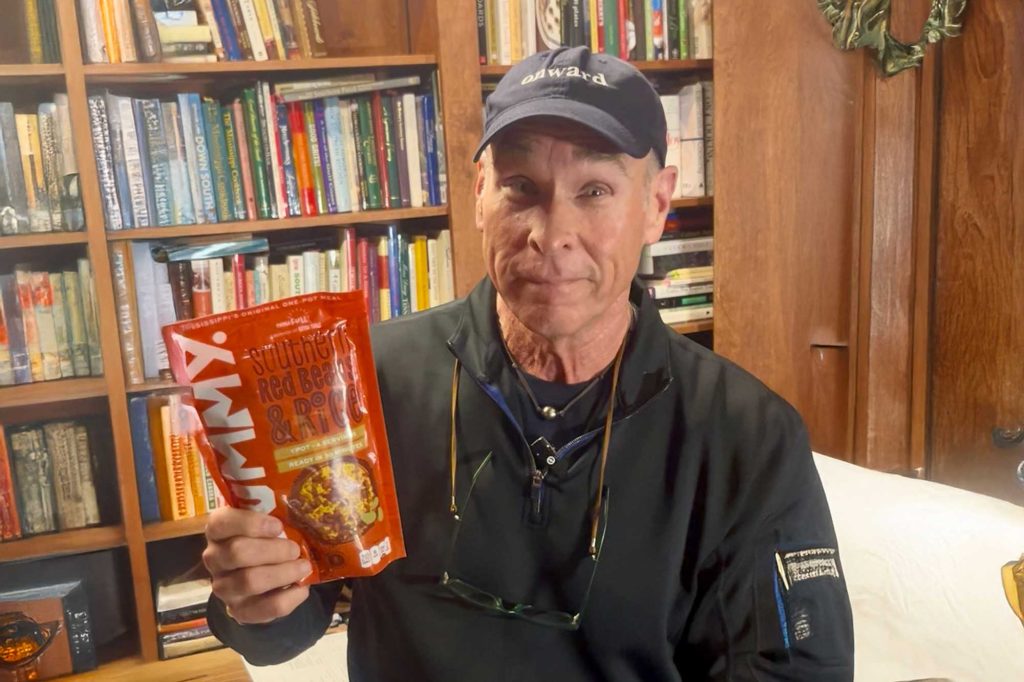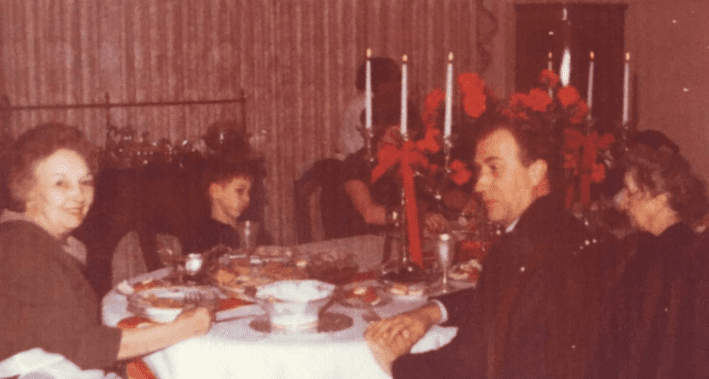
- Robert St. John says if he’s learned one thing five decades in as an entrepreneur it’s that money doesn’t define success.
There’s something comforting about a Saturday night in a Mississippi catfish house. The smell of catfish frying, and the familiar buzz of friendly voices make one feel as if you’re exactly where you are supposed to be in that moment. My wife and I were at Cuevas Fish House in Purvis after a full day of football viewing, but this time, it wasn’t the catfish or hush puppies that caught my attention. It was the busser.
Sitting there, watching Ms. Ann— a lady who has been bussing tables there for as long as I can remember— hustle around the dining room, efficiently and effectively cleaning tables as she always does, I became reflective. I’ve noticed her work ethic in the past, but on this visit, something clicked. She’s probably well into her seventies now, but you’d never know it from the way she works—fast, proficient, and as thorough as they come, not a wasted movement. She’s always been a part of the place’s character, but on this visit her energy hit differently. There’s a lesson in the way she moves, one that brought back memories of my own early hustling days.
If I could fill a restaurant with two dozen Ms. Anns, we’d be unstoppable.
Observing Ann at work brought a few things to mind. This year marks my 50th anniversary as an entrepreneur. The math seems unreal when I say it out loud—half a century since I started mowing lawns at the age of 12, trying to make a little extra money to have a life outside of my mom’s house. Though it wasn’t just lawns I was tending back then. I sold lemonade, bartered used records, and peddled old magazines, black lights and black eyes—anything I could get my hands on that someone else might want for some pocket change.
The black lights were nothing more than regular light bulbs I “borrowed” from the utility closet of my mom’s house and spray painted. The black eyes were a different story. I don’t know where I got the idea, but somehow, I figured out if you mark the head of a large railroad nail, thoroughly with a pencil, and then rub it on someone’s eye, it looks exactly like a black eye. Kids paid me good allowance money for that. To my knowledge, no one from my old neighborhood has died of lead poisoning.
Being raised by a single mom who was a public school art teacher meant if I wanted to do anything that involved money, I had to work for it. Yard work kept the money coming in, particularly since Hattiesburg wasn’t clamoring for black eyes.
At 15, I secured my first tax-paying job— a full-time gig working as a disc jockey at a local radio station for $2.30 per hour, 40 hours per week. I’ve had the good fortune of always having work since then. Even when projects were changing or new opportunities were emerging, I’ve never gone more than a few weeks without a job since 1976.
Back then, owning a business felt like the natural next step. It wasn’t about being called an entrepreneur. I was probably 30 before I even knew what that word meant. I just knew I wanted to work for myself and build something. A few years later, I’d learn there was another word— restaurateur— that I’d eventually claim.
Entrepreneurship, at least for me, is not always about money. It’s also about the process of building something out of nothing. That’s how it’s always been in my book. The money is a gage, a way to know the degree to which a thing you’ve created works, or not. The real thrill, the true joy for me, comes from creating. Whether it’s a business idea scribbled on a napkin, or a plan fleshed out over months on a yellow legal pad, it’s the creation itself that fuels the passion. From the initial moment of inspiration to seeing it come to life—jobs created, careers launched, opportunities born—that’s the reward.
If you think four decades in business comes without a fight, you’ve never been in the ring. Looking back, there’s no denying the tough times, and there have been plenty of them in nearly four decades of business. There were moments when scraping together sofa change was the only way to keep the lights on. I’ve flirted with bankruptcy three times over the past 37 years, been inches from the edge. I’ve shut down a few places, too. Those scars? They each tell a story, and I’ve learned from every one of them. But here’s the thing: I never declared bankruptcy, and for every hard knock, there have been two wins. Opening restaurants that stand the test of time, giving people jobs, creating places where folks come together—that’s the real joy. And now? Now, we’re hitting our stride and absolutely killing it on all fronts.
That said, the journey has been as much about leadership as it has been about entrepreneurship. I haven’t always been an effectve leader. I have no problem admitting that. But somewhere along the way, priorities shifted, and I started figuring out what really matters. It’s always been about the people—the team by your side, the family that supports you, and the community you’re fostering. The greatest commercial achievement in my 50 years isn’t a restaurant or business—it’s the people I’ve had the privilege of working alongside and the relationships forged in the trenches.
For a 25-year period in the middle of my career, I prioritized family over business. I don’t regret a minute of that. The business was always there, demanding attention, but family came first. That’s the trick to this whole thing: balance. Leadership, at its core, is about priorities. It’s about knowing when to push, when to pull back, and when to give someone else the chance to lead. It’s about setting an example, sure, but it’s also about stepping back and letting others take the reins when the time is right.
Five decades in, and if I’ve learned one thing, it’s that money doesn’t define success. It’s the scorecard, and sure, the highest score wins the game. We’re all about winning, but the real prize? It’s in the act of building, creating something that didn’t exist before, and knowing that it’s helped others find their way.
Right now, our bottom line has never been healthier— we’re absolutely scoring. But it’s not just about profits anymore— it’s about finding joy. The joy of someone diving into a meal they’ve been waiting all week for. The joy of watching a team come together in the heat of a busy service. Walking into a restaurant packed with people, enjoying the fruits of our labor—that’s the real reward. And the profits? That’s because of the team, not me.
Will I work into my seventies like Ms. Ann. Most definitely. Will I be as fast, energetic, and efficient? That remains to be seen.
So, here’s to 50 years as an entrepreneur. Fifty years of dreaming big, facing challenges, and chasing down victories. But most of all, here’s to the 10,000+ team members I’ve had the honor of working with along the way, and to the ones I haven’t met yet. They’ve made this ride worth every second, and they’ll keep making it worthwhile for as long as I’m in the game.
Do I have another 50 in me? Father Time probably has other plans. But retirement? Not in my playbook. I’ve got at least 30 left in the tank, and I’m not slowing down anytime soon.
Onward.
This Week’s Recipe: Grillades and Grits

Ingredients
2 lbs Veal top round cut into two-inch strips
2 tsp Kosher salt
1 Tbl Black pepper, fresh ground
1 /2 cup Bacon grease (or canola oil)
3 /4 cup Flour
3 /4 cup Onion, diced
1 /4 cup Shallot, minced
1 /2 cup Celery, diced
Garlic Cheese Grits
1 Tbl Bacon grease or oil
1 Tbl Garlic, minced
1 tsp Salt
2 cups Milk
2 cups Chicken broth
1 cup Grits
1 tsp Creole Seasoning
1 tsp Hot Sauce
8 oz Sharp cheddar cheese, shredded
4 oz Cream cheese
1 tsp Garlic, minced
3 /4 cup Green bell pepper, diced
1 /2 tsp Dried thyme
3 cups Chicken broth, hot
1 cup Tomatoes, peeled, large dice
1 /2 cup Red wine
2 tsp Hot Sauce
1 Bay leaf
1 tsp Salt
Instructions
Place one to two tablespoons of the bacon grease in a large heavy skillet and place on high heat. Season meat with one teaspoon of the fresh ground pepper and the kosher salt. Place the meat in hot skillet. Once browned, remove meat from the skillet.
Place the remainder of the bacon grease into skillet. Once melted, lower heat and slowly stir in flour. Cook three to four minutes. Add onion, shallot, celery, peppers, thyme and garlic. Continue to cook roux mixture for four to five minutes. Using a wire whip stir in the hot chicken broth, red wine, bay leaf and tomatoes and bring to a simmer.
Add veal back to the mixture and cook over a very low heat for two to three hours, stirring occasionally. When meat is tender stir in hot sauce, the remaining black pepper and salt.
Prepare garlic cheese grits during the last 30 minutes of cooking. Spoon grits onto a serving dish and top with grillades. Yield: eight servings
Garlic Cheese Grits
Melt bacon grease over low heat in a 1 1/2 quart sauce pot. Add garlic and salt and cook for one to two minutes being careful not to brown the garlic. Add milk and broth and increase heat. Bring to a simmer and slowly pour in the grits. Lower heat and cook grits for 15 minutes, stirring often.
Add remaining ingredients and stir until cheeses are melted. Serve immediately.
Yield: eight servings











